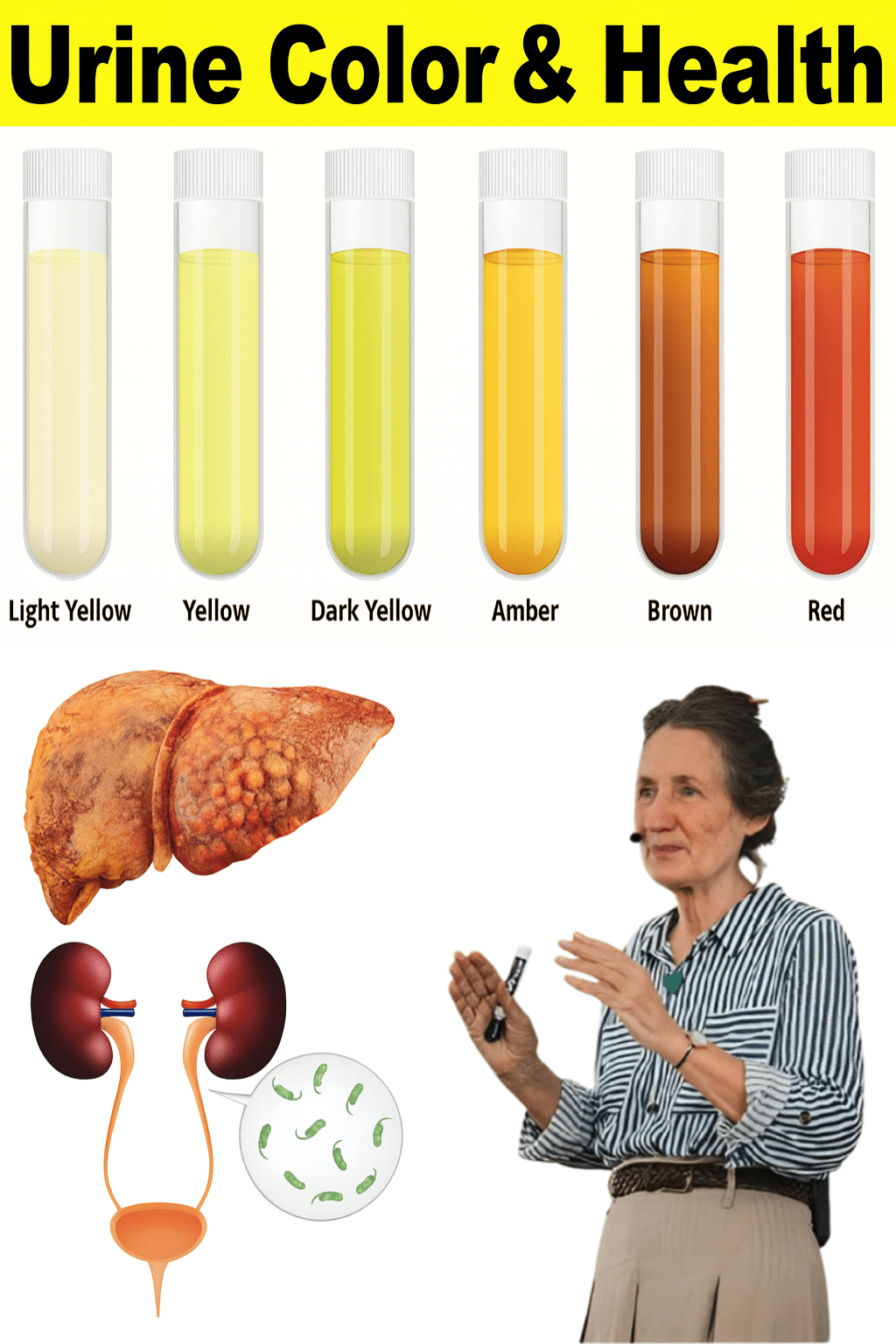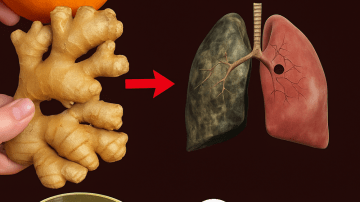Your urine is more than just a byproduct of your body’s daily functions—it’s a powerful indicator of your overall health. From hydration levels to potential medical conditions, the color, clarity, and even smell of your urine can reveal secrets about what’s happening inside you. Curious about what those shades in the toilet bowl mean? Dive into this engaging guide to decode the messages your body is sending and learn how to take charge of your well-being. Let’s explore the fascinating world of urine color and its impact on your health!

🧪 Why Urine Color Matters
Urine is a mirror reflecting your body’s internal state. Produced by your kidneys as they filter waste from your blood, its appearance can change based on hydration, diet, medications, or underlying health issues. By paying attention to these changes, you can catch early warning signs and make informed decisions about your health. Whether it’s a subtle shift to a darker shade or an unexpected hue, your urine is trying to tell you something. Let’s break down the spectrum of colors and what they mean for you.
💧 Clear or Pale Yellow: The Gold Standard of Hydration
If your urine is clear or a pale, straw-like yellow, congratulations—you’re likely well-hydrated! This color indicates that your kidneys are efficiently flushing out toxins, and your body has the right amount of water to function optimally. It’s the hue to aim for daily.
What to watch for: Consistently clear urine might mean you’re overhydrating. Drinking too much water can dilute essential electrolytes, leading to imbalances. Aim for a light yellow shade to strike the perfect balance. Sip water regularly, but don’t overdo it—your body will thank you!
🥤 Dark Yellow or Amber: A Thirsty Cry for Help
Noticed your urine turning a deep yellow or amber? This is your body waving a red flag for dehydration. When you’re low on fluids, your kidneys concentrate urine to conserve water, resulting in a darker, more intense color.
What to do: Boost your water intake immediately. Carry a reusable water bottle and sip throughout the day, especially after workouts, in hot weather, or during busy days when you might forget to drink. Aim for 8–10 cups of water daily, adjusting based on activity levels and climate. If the dark color persists, it could signal a need for medical attention, so don’t ignore it.
🍊 Orange Urine: A Curious Hue with Multiple Causes
Orange urine can catch you off guard, but it’s not always cause for alarm. This vibrant shade can stem from dehydration, certain medications, or even your diet. For instance, medications like rifampin (used for tuberculosis) or phenazopyridine (for urinary discomfort) can turn urine orange. Foods rich in beta-carotene, like carrots, or high doses of vitamin C can also create this effect.
When to act: If orange urine comes with symptoms like pale stools, yellowing skin, or eye discoloration, it could point to liver or bile duct issues. These are serious signs, so contact a healthcare provider promptly to rule out conditions like hepatitis or gallstones.
🌸 Pink or Red Urine: A Color That Demands Attention
Spotting pink or red urine can be startling, but don’t panic just yet. Sometimes, it’s as harmless as eating beets, blueberries, or rhubarb, which can temporarily tint your urine. However, this color can also indicate hematuria (blood in the urine), which may be linked to:
- Urinary tract infections (UTIs): Often accompanied by burning or frequent urination.
- Kidney stones: These can cause pain and blood in the urine.
- Prostate issues: Common in men, especially with age.
- Bladder or kidney disease: More serious conditions that require immediate attention.
Next steps: If you haven’t eaten pigment-rich foods and notice pink or red urine, consult a doctor right away. Early detection of UTIs, stones, or other issues can make treatment easier and prevent complications.
💎 Blue or Green Urine: A Rare and Intriguing Sight
Blue or green urine sounds like something out of a sci-fi movie, but it’s a real phenomenon! This unusual color is often tied to external factors like:
- Medications: Drugs like propofol (an anesthetic) or amitriptyline (an antidepressant) can create this effect.
- Food dyes: Certain artificial dyes in food or drinks can temporarily alter urine color.
- Medical conditions: Rare conditions like familial hypercalcemia or specific bacterial infections in the urinary tract can also cause this.
What to do: If you haven’t consumed anything unusual and notice blue or green urine, see a healthcare provider. It could indicate an infection or metabolic disorder that needs investigation. While rare, these conditions are worth checking out to ensure your peace of mind.
☕ Brown or Cola-Colored Urine: A Serious Red Flag
Brown or cola-colored urine is one of the most concerning shades, often signaling a deeper issue. Potential causes include:
- Severe dehydration: Your body may be critically low on fluids.
- Liver disorders: Conditions like hepatitis or cirrhosis can cause this color.
- Hemolysis: The breakdown of red blood cells can darken urine.
- Rhabdomyolysis: Muscle injury from intense exercise or trauma can lead to this hue.
Urgent action: If your urine is brown and you experience symptoms like fatigue, nausea, or yellowing skin, seek medical help immediately. These could be signs of liver damage or other serious conditions that require prompt treatment.

🌫️ Foamy or Cloudy Urine: A Sign to Investigate
If your urine looks foamy or cloudy, it could point to several issues, including:
- Urinary tract infections: Cloudy urine paired with a strong odor or burning sensation often indicates a UTI.
- Kidney problems: Excess protein in the urine (proteinuria) can cause a foamy appearance, signaling kidney issues.
- Dehydration: Concentrated urine can appear cloudy due to high levels of phosphates.
What to do: Occasional cloudiness might not be a concern, but persistent foamy or cloudy urine warrants a doctor’s visit. A simple urine test can help identify infections or kidney issues early, allowing for timely treatment.
🔍 Other Factors to Consider
Beyond color, other characteristics of your urine can provide clues about your health. For example:
- Odor: A strong or unusual smell could indicate dehydration, infection, or dietary changes (like eating asparagus).
- Frequency: Urinating too often or too infrequently might point to bladder issues or hydration imbalances.
- Pain or burning: These are classic signs of a UTI or other urinary tract problems.
Keeping a mental note of these changes can help you communicate effectively with your healthcare provider if something feels off.
💡 How to Keep Your Urinary System Healthy
Maintaining a healthy urinary system is easier than you might think. Here are some practical tips to keep your kidneys and bladder in top shape:
- Stay hydrated: Aim for light yellow urine as your hydration goal. Carry a water bottle and sip regularly throughout the day.
- Eat a balanced diet: Limit excessive salt, sugar, and processed foods, which can strain your kidneys over time.
- Monitor medications: Be aware of any drugs or supplements that might affect urine color, and discuss concerns with your doctor.
- Exercise regularly: Physical activity supports overall health, including kidney function, but avoid overexertion that could lead to muscle injury.
- Don’t ignore symptoms: Persistent changes in urine color, smell, or frequency should prompt a visit to your healthcare provider.
🩺 When to See a Doctor
While some urine color changes are harmless, others require immediate attention. Seek medical advice if you notice:
- Persistent red, pink, brown, or cloudy urine unrelated to diet or medications.
- Symptoms like pain, burning, fever, or fatigue alongside unusual urine color.
- Any sudden or unexplained changes that last more than a day or two.
Early intervention can prevent minor issues from becoming major health concerns, so don’t hesitate to reach out to a healthcare professional.
🌟 Final Thoughts: Listen to Your Body
Your urine is like a daily health report card, offering insights into your hydration, diet, and potential medical issues. By paying attention to its color and other characteristics, you can take proactive steps to stay healthy and catch problems early. Whether it’s drinking more water, adjusting your diet, or consulting a doctor, small actions can make a big difference in your well-being.
So, the next time you visit the bathroom, take a quick glance—what’s your urine telling you today? Stay curious, stay hydrated, and keep your health in check!






